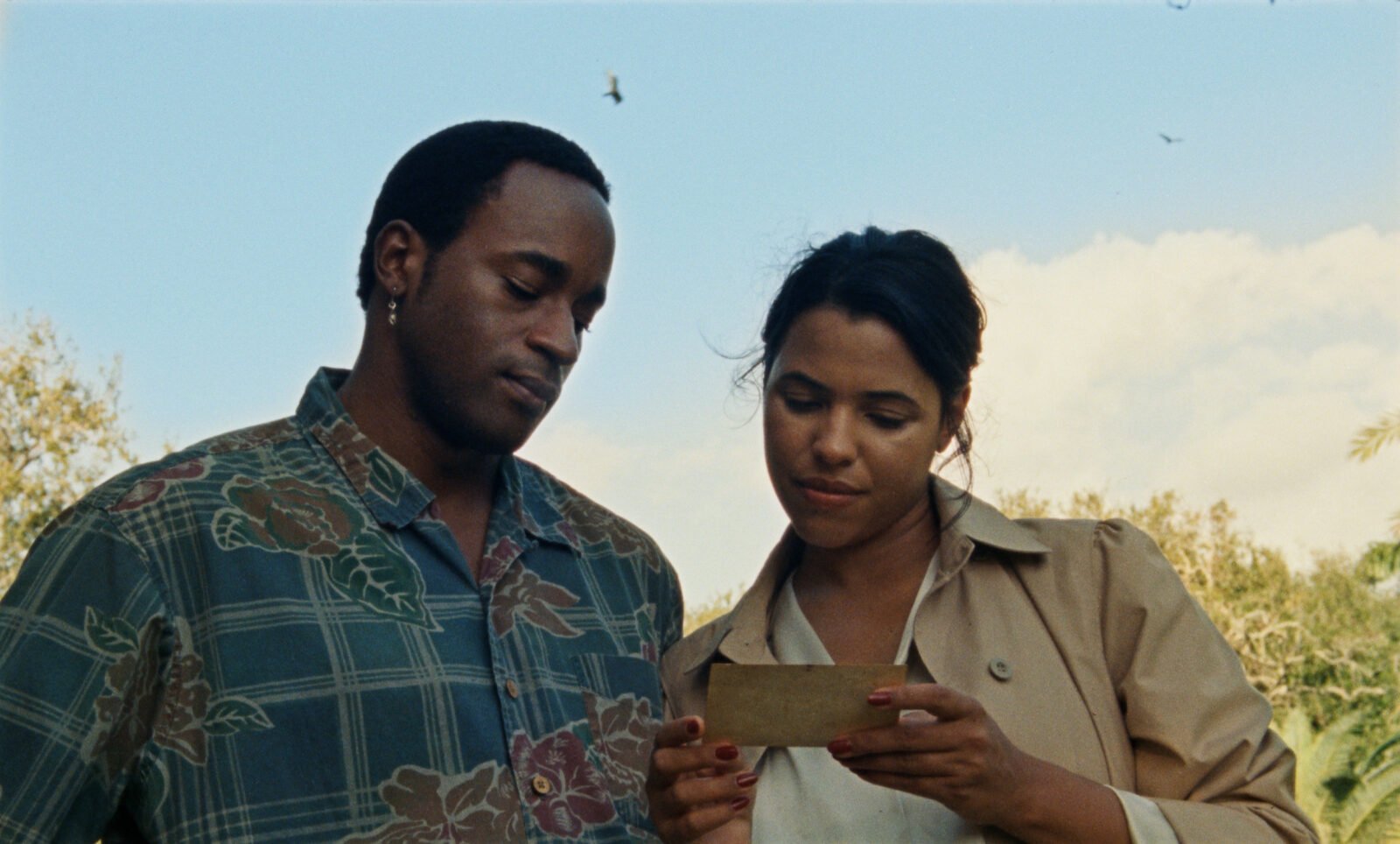In a dark room, an oscillating fan rotates the moist air; a jazz record spins from an old turntable. A woman sits silently at a table, her cigarette illuminating the planes of her face.
Unashamedly ruminative and rich in imagery, The ballad of Suzanne Césaire is a daring, dreamlike feature debut from visual artist and filmmaker Madeleine Hunt-Ehrlich. The taut 75-minute film rejects the linear narrative and delivers a lush, fragmented portrayal of the time and topography that informed the Afro-Surrealist’s short but intense period of fervent activist writing.
“We are making a film about an artist who wanted to be forgotten,” acknowledges an actress (Zita Hanrot) who plays Suzanne Césaire, the so-called “Black Panther by Negritude” – the anti-colonial literary, cultural and political movement that blossomed among black French-speaking intellectuals in the 1930s. By merging the process of making the film with fragments from Suzanne’s imagined life and actual words, The Ballad blurs the distinction between past and present, lost and found. Ants swarm over a page of typed text. A sudden storm disrupts the diegesis.

Known To redress omissions in the historical record of the black diaspora, Hunt-Erhlich ignores the conventional biopic at every turn, simultaneously celebrating Césaire’s wandering, compelling spirit and revealing the impossibility of ever truly knowing why she stopped writing. In doing so, Hunt-Ehrlich examines the limitations of art itself – her own alongside her heroine’s surrealist writings, only seven of which were published.
First published in the literary magazine Tropiquesthat she founded with her husband, poet and politician Aimé Césaire (played by Motell Foster), Suzanne’s essays reflect her ecological consciousness and fierce anti-assimilationist sentiments. The excerpts from Suzanne’s manifestos are read in French and English throughout the film and underline her theoretical rigor and penchant for the poetic. Although she was quickly overshadowed by Aimé’s fame, during the time they were exiled to the Caribbean during World War II, Suzanne was treated as an intellectual equal – or so it is. The Ballad presents the power couple.
Friends of French surrealist André Breton (Josué Gutierrez), who visits them in Martinique, Aimé and Suzanne share a sensual spark on screen, fueled by mutual respect for each other’s genius. Hanrot not only bears a striking facial resemblance to Suzanne, but also embodies a quiet melancholy that feels plausible for a writer of any era. Foster and Gutierrez, with their American accents and mannerisms, are more of a piece.

Suzanne had six children during her marriage to Aimé, and the duties of motherhood – along with those of being a wife to such a prominent figure – may have been why she chose to stop writing after Tropiques ceased publication in 1945. In certain scenes, Hanrot’s real baby appears near Suzanne – pushed in a modern pram or lying on a picnic blanket – as if to suggest the continued difficulty of living a creative life while maintaining a to start a family.
Shot on 16mm, The Ballad exudes a tactile, nostalgic quality that echoes the films the characters would have seen in the 1940s. The languid, meditative nature of many shots invites us to reflect on how much we know—or, more likely, don’t know—about the women, especially women of color, who founded artistic and political movements long before the Women’s Movement of the United States. late 20th century.
The ballad of Suzanne Césaire is currently showing at select film festivals.













Leave a Reply